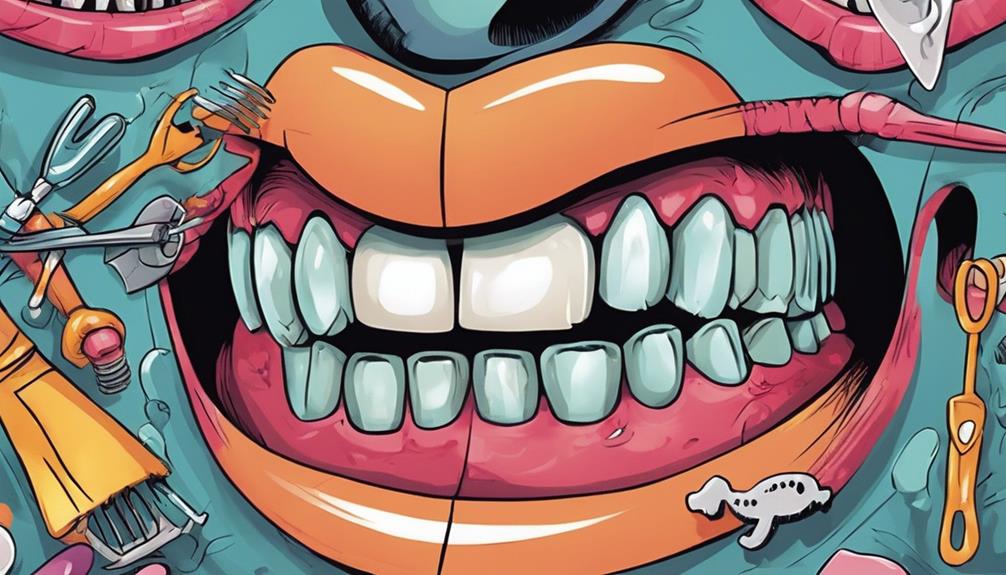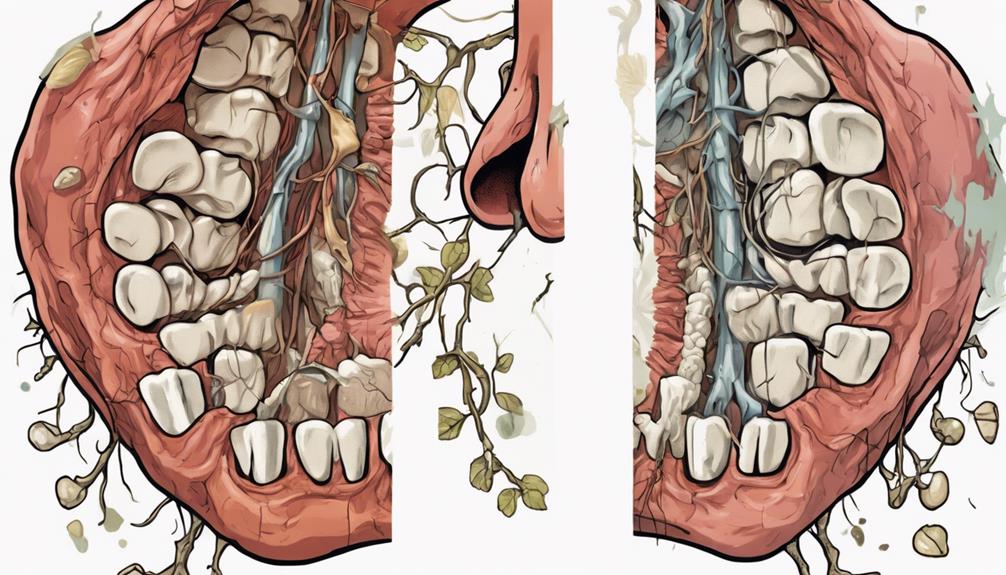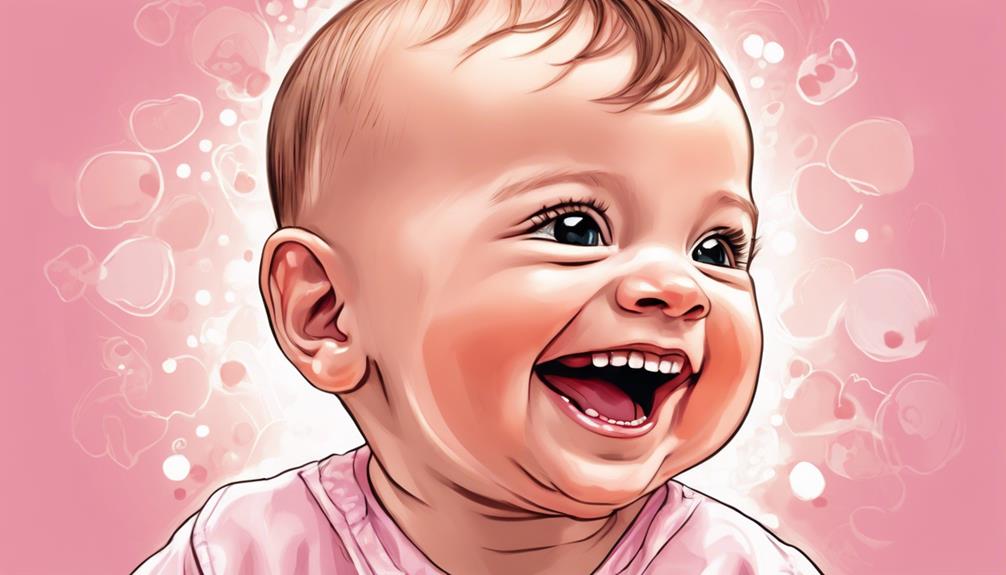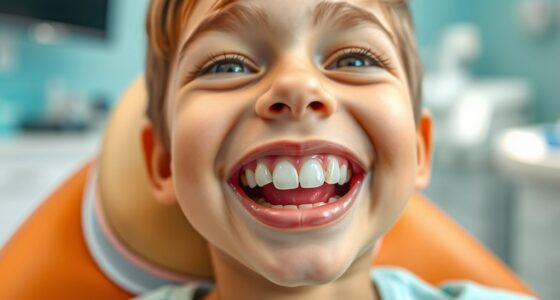Kids typically start losing teeth between ages 5 and 6, beginning with the lower central incisors. By ages 6 to 7, the upper central incisors usually follow. Next, lateral incisors fall out between ages 7 and 8. As they get older, canines are typically lost between ages 9 and 12, along with first molars around ages 9 to 11. The second molars are the last to be shed, generally between ages 10 and 12. Understanding this process can help you ease any concerns. There's so much more to explore about this exciting milestone!
Key Takeaways
- Kids typically lose baby teeth between ages 5 and 12, with lower central incisors being the first to fall out.
- Upper central incisors usually follow, lost around ages 6 to 7.
- Lateral incisors are lost between ages 7 and 8.
- Canines are typically lost between ages 9 and 12, followed by first molars.
Age of Tooth Loss
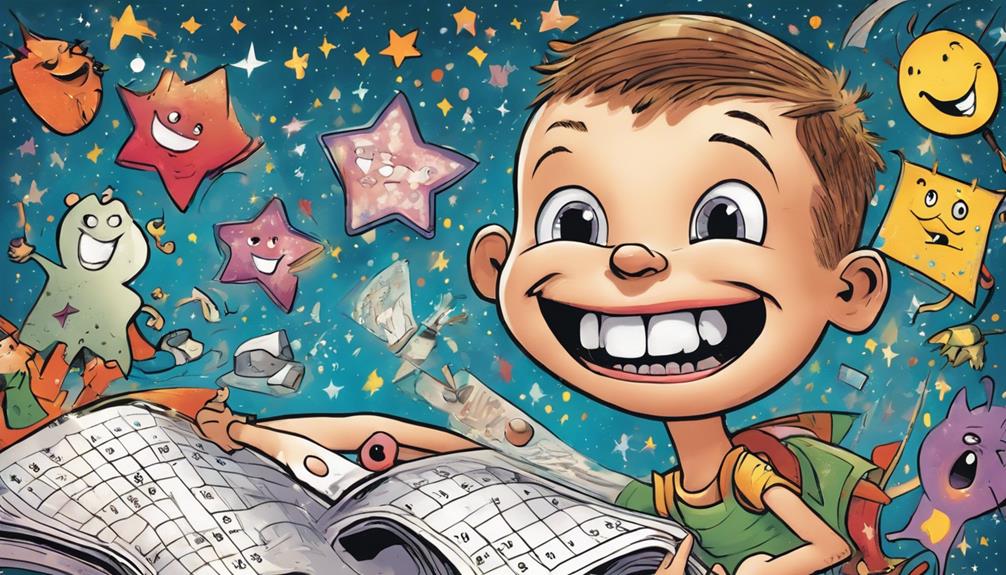
Kids usually start losing their baby teeth between ages 5 and 6, with the lower central incisors being the first to go. This is usually an exciting time for your child, as they may enthusiastically anticipate losing their first tooth. Typically, kids lose their first tooth around this age, marking the beginning of a significant developmental milestone.
As they progress through this phase, your child will continue to lose teeth, with the central incisors generally falling out between ages 6 and 7.
After those, the lateral incisors usually come next, typically lost between ages 7 and 8.
The process continues as they shed canines and molars, with first molars lost around ages 9 to 11.
Order of Tooth Loss

When your child starts losing teeth, there's a specific order that usually unfolds. Typically, the lower central incisors go first, followed by a predictable sequence of other teeth.
Understanding this order and the age range for each type can help you anticipate what's next in your child's dental journey.
Sequence of Tooth Loss
The sequence of tooth loss typically starts with the lower central incisors, making way for a natural progression as children shed their baby teeth. As your child loses these teeth, it is crucial to understand the order to anticipate what comes next in their dental journey.
Here's a quick look at the sequence of tooth loss:
| Tooth Type | Age Range (Years) |
|---|---|
| Lower Central Incisors | 6 – 7 |
| Upper Central Incisors | 6 – 7 |
| Lateral Incisors | 7 – 8 |
| Canines (Cuspids) | 9 – 12 |
| First Molars | 9 – 11 |
| Second Molars | 10 – 12 |
This sequence shows that your child will first lose their incisors, leading to the eventual appearance of permanent teeth. Canines and molars follow in the process, with the second molars being the last baby teeth to go. By age 12, most children have lost all their baby teeth, making way for their permanent smiles!
Age Range for Loss
Children typically begin losing their baby teeth around ages 5 to 6, with the lower central incisors being the first to go. As they shift to permanent adult teeth, understanding the order of tooth loss can help you track this important milestone.
Here's a quick overview of the order of tooth loss:
- Lower central incisors: Lost first, typically between ages 6 and 7.
- Upper central incisors: Follow closely after the lower ones, usually around ages 6 to 7.
- Lateral incisors: These are lost next, around ages 7 to 8, both upper and lower.
- Canines and first molars: Expect to lose canines between ages 9 and 12, and first molars between ages 9 and 11.
The last baby teeth to fall out are the second molars, generally occurring between ages 10 and 12. Most kids will have lost all their baby teeth by age 12, making way for their permanent adult teeth.
Knowing this timeline can prepare you and your child for each step of this natural process.
Factors Influencing Timing
Several factors can influence the timing of your child's tooth loss, affecting when they'll say goodbye to those baby teeth. Typically, kids start losing their baby teeth around ages 6 to 7, with the lower central incisors being the first to go. However, genetics plays a significant role; some children might lose their first tooth as early as age 4 or as late as age 7.
The order in which kids lose their baby teeth generally follows a pattern: the upper central incisors come next, followed by lateral incisors, canines, and finally, the molars. The last baby teeth are usually lost between ages 10 and 12.
Your child's overall dental health and oral hygiene are essential in determining the timing of tooth loss. Poor oral health can lead to premature loss of baby teeth, affecting the development of the teeth and the alignment of the first permanent teeth.
Additionally, environmental factors, such as trauma from accidents, can also cause early tooth loss. Keeping an eye on these factors can help you understand what to expect as your child navigates through this natural process.
Factors Influencing Loss

Genetics, dental hygiene, nutrition, and environmental factors all play essential roles in determining when kids lose their baby teeth. Understanding these factors can help you support your child's dental health journey.
- Genetics: Some kids naturally lose their baby teeth earlier or later than the average age, which is typically between 5 and 7 years.
- Dental Hygiene: Poor oral care can lead to decay, causing early tooth loss. Regular brushing and flossing are crucial.
- Nutrition: A balanced diet rich in vitamins and minerals is important. Good nutrition supports healthy teeth and can delay premature loss.
- Environmental Factors: Accidents or injuries can disrupt the normal eruption of permanent teeth, leading to unexpected loss of baby teeth.
Dental Health Tips
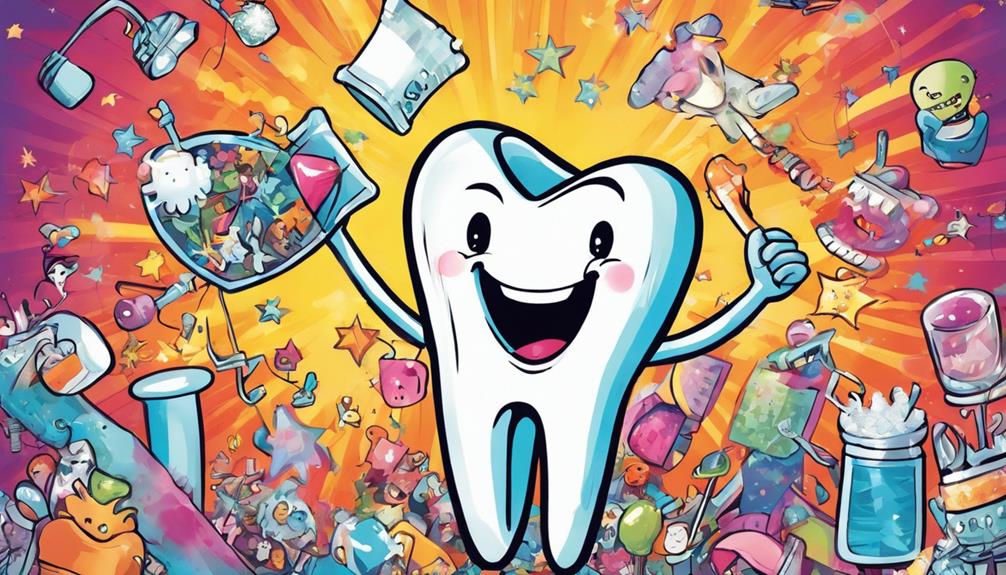
Maintaining good dental health is essential for ensuring your child's baby teeth stay healthy until they're ready to fall out naturally. To achieve this, encourage your child to brush their teeth at least twice a day for two minutes each time. This helps effectively remove plaque and prevent decay. Daily flossing should also become part of their routine, even for baby teeth, as it maintains healthy gums and prevents cavities.
Promote healthy eating habits by limiting sugary snacks and beverages. Instead, opt for tooth-friendly options like fruits, vegetables, water, and milk. These choices support their overall dental health and make losing baby teeth a smoother process as they shift to permanent teeth.
Don't forget to schedule regular dental check-ups every six months with your child's dentist. These visits are essential for monitoring dental health and addressing any issues early on.
Common Concerns

As your child begins to lose their baby teeth, it's normal to have questions and concerns about the process and what it means for their dental health. Here are some common concerns you might have:
1. What if my child loses a tooth too early?
Early loss of baby teeth can lead to misalignment of permanent teeth. If this happens before age 4, consult your dentist.
2. How should I handle a loose tooth?
Encourage your child to wiggle their loose tooth gently. It's a natural process, and discomfort is usually temporary.
3. What if a baby tooth doesn't fall out?
Retained baby teeth may require dental visits to evaluate whether removal is necessary for proper alignment of adult teeth.
4. How can I ease my child's discomfort?
Offer soft foods and reassure them about the Tooth Fairy, turning this experience into a fun and positive one.
Understanding these aspects can help you support your child through this important stage. Remember, losing baby teeth is a sign that new, permanent teeth are on their way!
Timeline for Tooth Loss
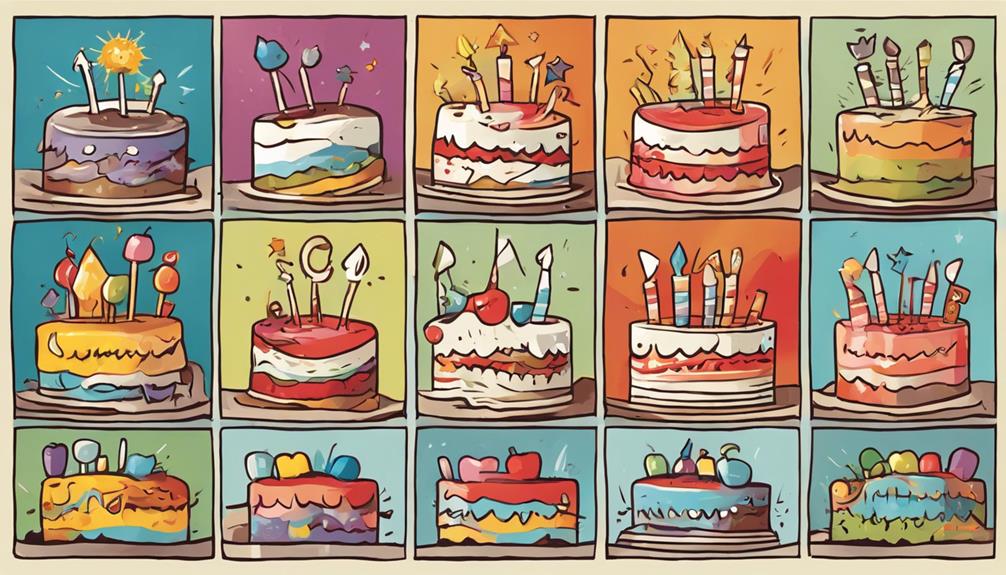
Around ages 5 to 6, you'll notice your child starting to lose their baby teeth, beginning with the lower central incisors. These are typically the first teeth to fall out. By ages 6 to 7, the upper central incisors follow suit.
This timeline is important as it marks the changeover to your child's permanent teeth. As your child continues this process, lateral incisors are generally shed between ages 7 and 8.
The canines are lost later, typically between ages 9 and 12. During this time, the first molars usually fall out between ages 9 and 11, making way for their permanent counterparts.
Importance of Dental Care
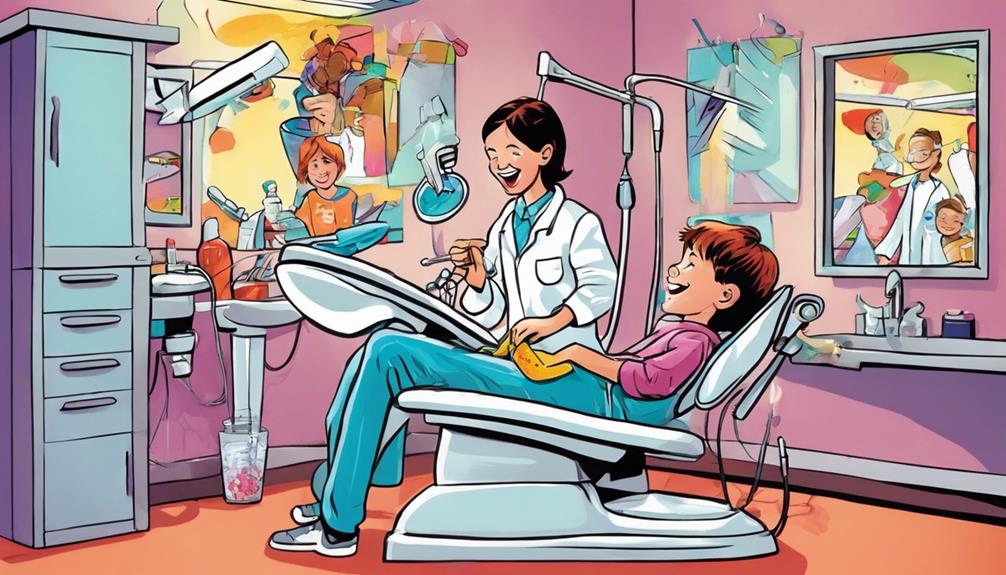
Good dental care is key to ensuring your child's teeth develop properly and stay healthy throughout their growth. As your child navigates the journey of losing teeth, it's crucial to establish strong dental habits early on.
Here are four important aspects to focus on:
- Regular Dental Check-ups: Schedule visits every six months to monitor your child's dental health and catch any issues before they escalate.
- Daily Oral Hygiene: Encourage brushing twice daily and flossing regularly to prevent tooth decay and gum disease.
- Balanced Diet: Limit sugary snacks and promote tooth-friendly foods, which support the healthy development of baby teeth and permanent molars.
- Awareness of Dental Issues: Keep an eye out for any signs of trouble during the shift from baby teeth to your child's permanent teeth.
Frequently Asked Questions
Which Teeth Fall Out and Which Don't?
When kids lose teeth, they typically shed baby teeth, like incisors and molars. Permanent teeth, however, don't fall out unless there are issues. You'll notice a gradual shift as their adult teeth emerge. Understanding kids’ tooth loss is an important part of monitoring their dental development. It’s common for children to feel a mixture of excitement and apprehension as their baby teeth make way for their adult ones. As a parent, it’s important to offer reassurance and support during this transition. By understanding kids’ tooth loss, you can help them feel more comfortable and confident as they grow.
Do All 20 Baby Teeth Fall Out?
Yes, all 20 baby teeth typically fall out. This natural process usually starts around age 6 and continues until about age 12 or 13, ensuring your child's mouth develops properly with permanent teeth.
What Teeth Does a 10 Year Old Lose?
At age 10, you'll notice your child losing molars and canines. They typically shed lower canines and may have lost some incisors earlier. Each tooth lost marks a step toward their adult smile.
Which Teeth Fall Out at What Age?
When kids start losing teeth, it usually happens around ages 5 to 6. The order's important: lower central incisors first, followed by upper central incisors, lateral incisors, canines, molars, and finally, second molars.
Is There a Specific Order in Which Kids Lose Their Teeth?
Children usually start losing their baby teeth around the age of six or seven. The first teeth to go are usually the lower front teeth, followed by the upper front teeth. After that, what teeth do kids lose can vary, but most children will have lost all their baby teeth by the age of 12.
Conclusion
As your child begins their tooth-losing journey, think of it as a rite of passage, much like a caterpillar transforming into a butterfly.
Each lost tooth is a step toward their beautiful adult smile.
Remember, consistent dental care is essential during this time. Just as a gardener tends to their plants, nurturing their dental health will help them flourish.
Celebrate each lost tooth, knowing it's a sign of growth and a bright future ahead!
